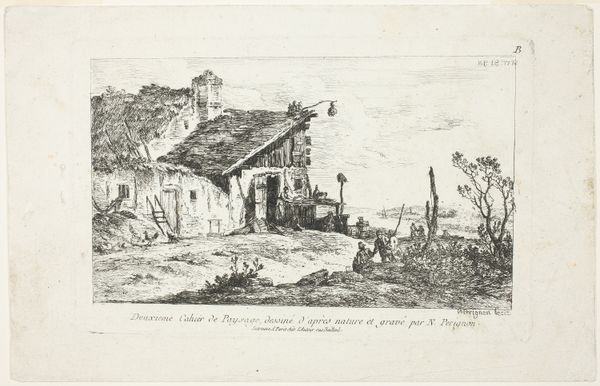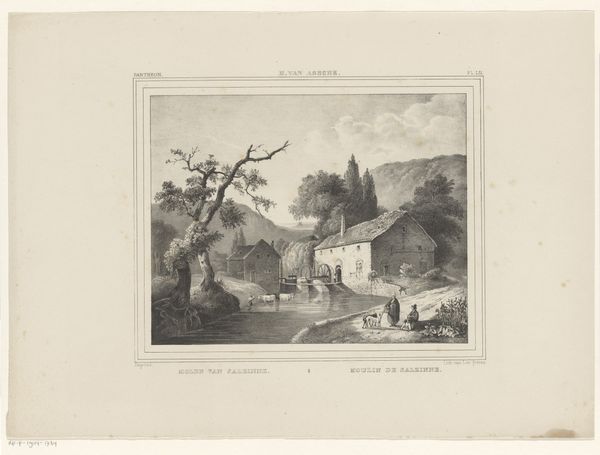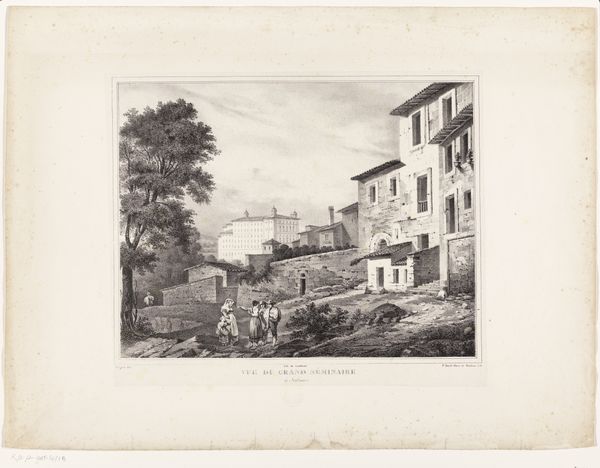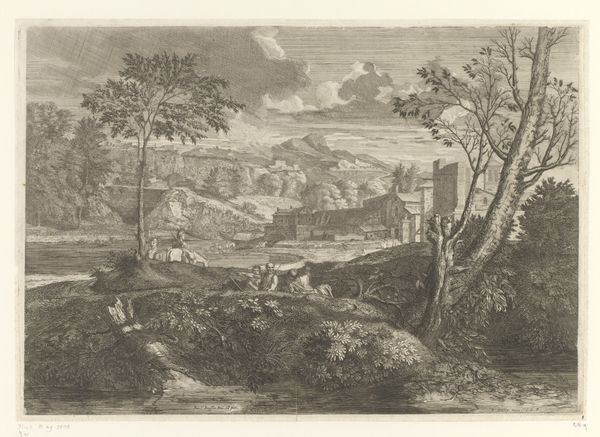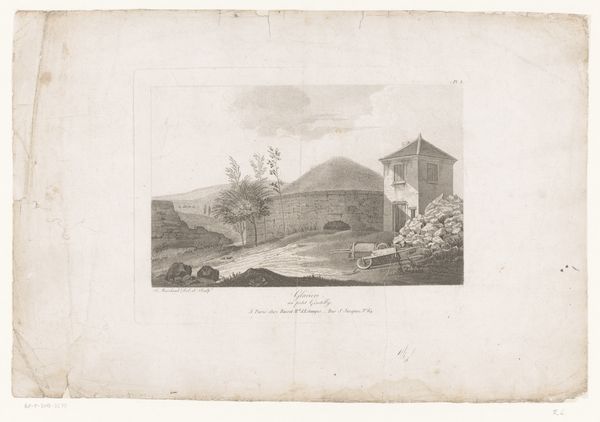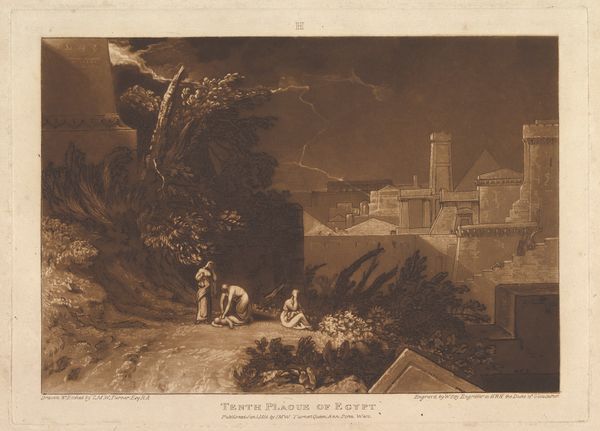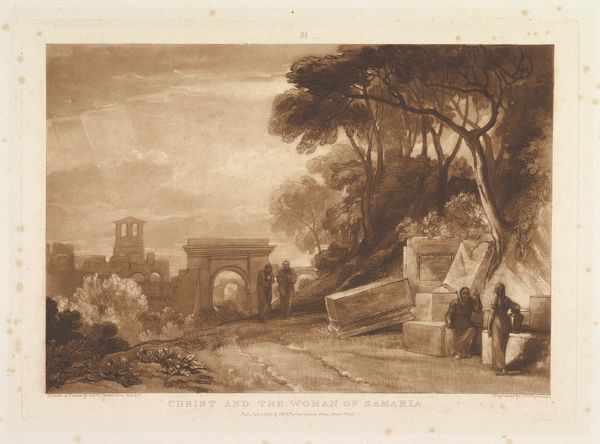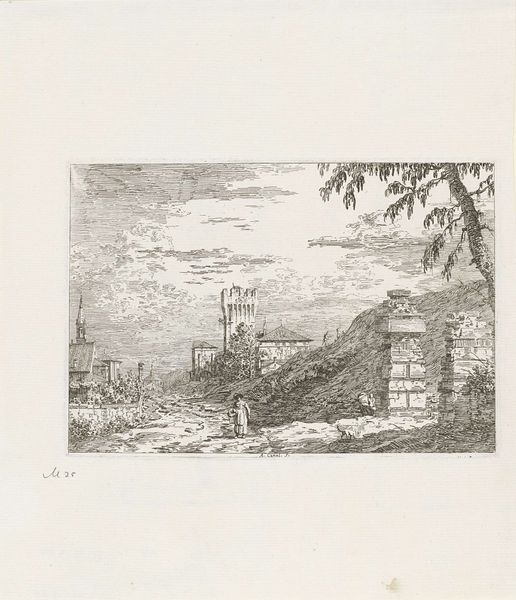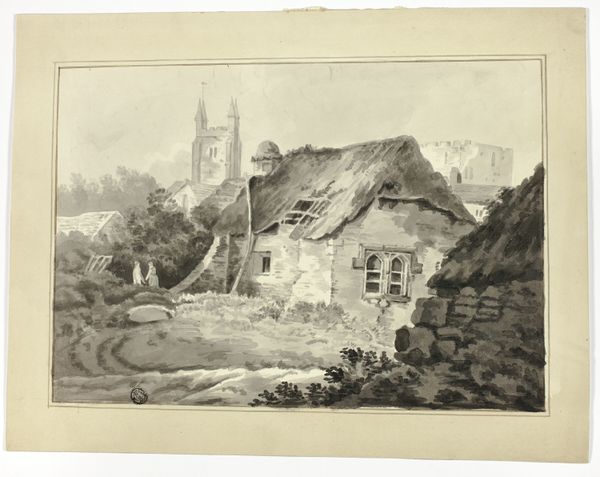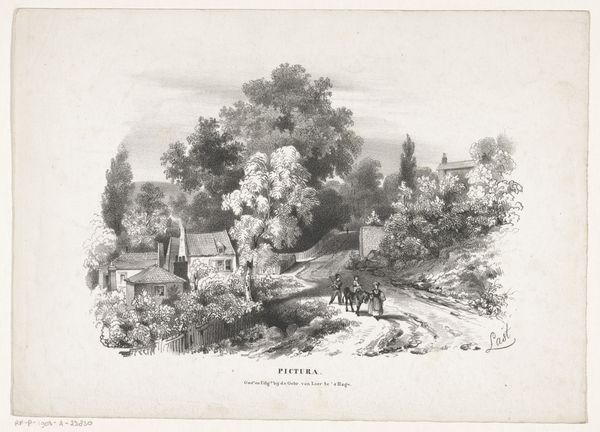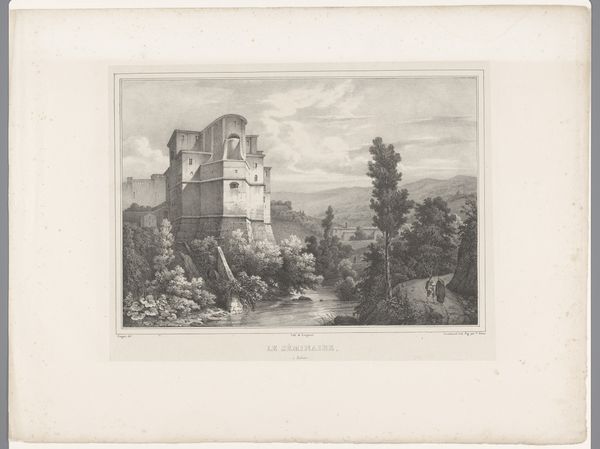
lithograph, print
#
lithograph
# print
#
landscape
#
england
#
cityscape
Dimensions: 241 × 331 mm (image); 279 × 361 mm (plate); 351 × 454 mm (sheet)
Copyright: Public Domain
Curator: This is "Le Casset; Vallee du Monetier," a lithograph print by James Duffield Harding. The artwork is currently located here at the Art Institute of Chicago. Editor: My first impression is quietude. There’s a stillness despite the rushing water depicted, and the monochrome really lends to that subdued feeling. The composition feels almost classically romantic. Curator: Harding seems to evoke the picturesque—framing nature in a way that calls to mind established aesthetic ideals. Note how the architecture in the background anchors this image. It pulls together civilization and nature, each balanced in visual weight. Editor: Absolutely, but what intrigues me are the textures achieved with the lithographic stone. Look at the various grades of blacks and greys--they really convey the varied building materials in the small town, contrasting the smoothness of the church tower against the roughness of the stone roofs. You get such nuance of tone and feel despite its being just black and white! Curator: And the symbolic weight! The church dominating the skyline is no accident. It's both a physical marker of the community and a reminder of its spiritual center, an ever-present symbol that guides those living in this remote locale. Editor: But also, consider the material context: lithography allowed for relatively quick and inexpensive reproduction. Images like these became more accessible, which democratized artistic engagement and knowledge about these faraway places. Someone, perhaps who had never travelled, could experience this view. Curator: That's such a great point. It made landscapes more obtainable for a broader audience. These printed images offered a window to see the world differently, maybe fostering a sense of connection and understanding. Editor: This wasn't merely an objective rendering, though. It's actively shaping public perception and even fueling desire, making landscapes objects to be consumed in both a visual and symbolic sense. It begs the question about who benefits from this visual “consumption”? Curator: Right. Well, pondering these layers adds another dimension to our viewing experience. Thanks for highlighting the materials, social forces, and enduring symbols embedded in this print! Editor: Thanks, I’ve enjoyed delving into this lithograph with you. Harding's piece reminds me of how art not only reflects but actively constructs the ways we perceive both places and things.
Comments
No comments
Be the first to comment and join the conversation on the ultimate creative platform.
